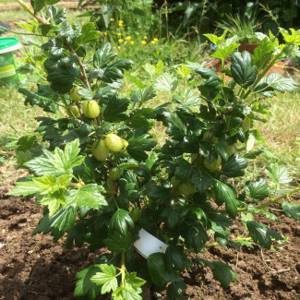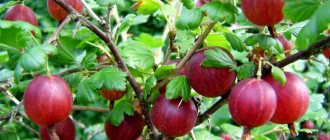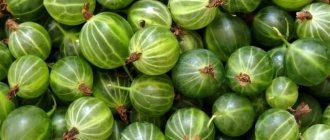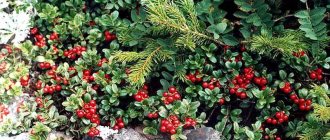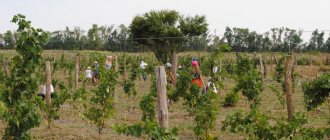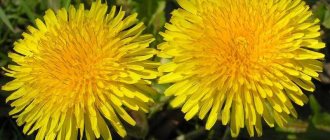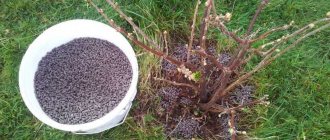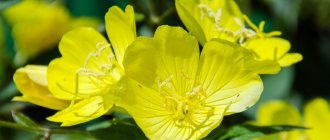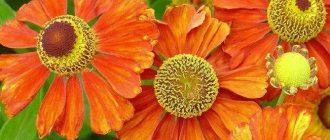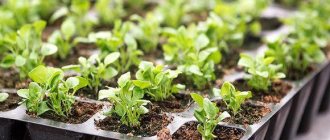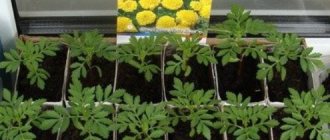Gooseberry yield in the Moscow region and on average in Russia
Among all berry crops, gooseberries have particularly high yields. In central Russia, as well as in the Moscow region, with proper care and favorable conditions, you can annually collect 10-20 kilograms of berries from one bush. Moreover, gooseberries can bear fruit for more than 20 years. Compared to other berry bushes, gooseberries are recognized as the most durable. It is not picky about the soil and begins to bear fruit quickly. And thanks to self-pollination, even a single bush can produce a harvest.
During the season, gooseberries on average yield up to 20-30 tons of berries per hectare.
In some farms near Moscow, yields reach more than 200 centners per hectare. To obtain such high yields, it is necessary to create the appropriate growing conditions for the crop: throughout the life of the bushes, properly cultivate and fertilize the soil, thin out the bushes, and carry out disease and pest control in a timely manner.
Caring for young bushes at a time when they have not yet entered the fruiting phase is of great importance. During this time, it is necessary to have time to grow strong plants capable of producing generous harvests in the future.
However, many gardeners are unaware that even old, unkempt bushes can become highly productive if you know the basics of gooseberry farming and pay attention to it.
Harvesting
The timing of the beginning of fruiting varies among different varieties. In general, berries begin to ripen in July. Ripening occurs until the end of summer. Harvesting can be done in the phase of technical ripeness of the berries, when the fruits have already formed, but are not yet suitable for eating - they are sour. This gooseberry is used for making jam, compotes, and preservation. The harvest is stored in a cool place for more than a week. Consumer ripeness berries are ripe and sweet. The skin is softer, the color and size of the berries correspond to the variety. Ripe gooseberries are stored in containers of two to three kilograms for 4 days. At zero temperature, the harvest can be stored for up to one and a half months. To extend the shelf life of berries to six months, they are placed in plastic bags and frozen in the refrigerator.
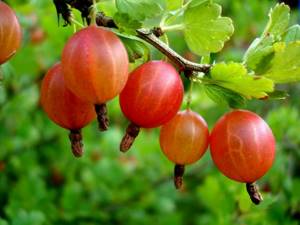
The best gooseberry planting scheme
How many gooseberries can you pick? Much depends on what the planting pattern is. If it is necessary to harvest a good harvest, then gooseberries are planted according to a compacted pattern: the distance in the row should be reduced to 60-80 centimeters, the row spacing should be narrowed to 1-1.2 meters, and the number of shoots on the bush should be reduced to 10-14 instead of 20-30. This planting scheme makes it possible to collect 300-400 kilograms of berries from 1 hundred square meters.
And if you put the bushes on trellises, the harvest will be even higher. This is explained by the fact that, in this way, the scheme turns out to be even more dense - the bushes are planted at a distance of 40-60 centimeters from each other, and the shoots are tied at a distance of 10-15 centimeters from each other in the plane of the trellis. As a result, up to a ton of gooseberries are harvested from one hundred square meters.
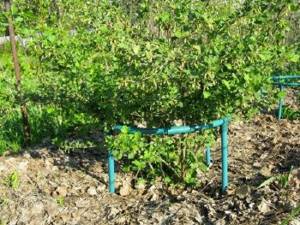
The yield of almost all fruit plants depends on the soil, weather conditions and, of course, care
The variety also plays an important role. For example, varieties Malachite, Russian Early, Green Rain produce only 2 kilograms per bush. And from gooseberry bushes of the varieties Neslukhovsky, Finik, Donetsk large-fruited, Ural emerald, Grand, you can harvest up to 8 kilograms. Care also means a lot. In order to get a good harvest, gooseberry bushes should be pruned every year - remove old shoots and leave the young, strongest ones.
Tip #2. Gooseberry bushes need to be fed three to four times a season: add 1 tablespoon of complex fertilizer per 10 liters of solution to the mullein.
The most delicious gooseberry varieties are susceptible to powdery mildew. Therefore, before and after flowering, the bushes are sprayed with Topaz and Fundazol, alternating them. And to increase productivity, microfertilizers are added to the fungicide solution: 1 teaspoon of Sudarushka or Ryazanochka per 10 liters of water.
In the fall, when digging the soil, for each square meter you need to add a bucket of well-rotted manure or compost and mineral fertilizers: 80 grams of superphosphate, 20 grams of potassium sulfate, 40 grams of ammonium nitrate for each bush. It is important to water the plants - this increases the yield from the bush and significantly increases the size of the berries.
For example, with full watering, bushes of the Date variety produce more than 13 kilograms of berries, and without proper watering - only 5-6 kilograms. Gooseberries especially need watering during the fruiting period - after flowering.
During this period, the bushes need to be watered every week. The soil under the bushes is mulched with sawdust or straw. This makes it possible to retain moisture, which means less frequent watering of the bushes.
How to pick gooseberries correctly
Common gooseberry - either European or rejected
Based on the size of the plantation, a suitable collection method is chosen. Berries for fresh consumption are usually picked by hand to prevent damage.
Picking gooseberries by hand
Pickers wear long sleeves and gloves to protect their hands from scratches. The berries are carefully picked from the branches along with the tails so that they can stay fresh longer.
Mechanical devices
In gardening farms, vibrators are used to pick berries from bushes. This device shakes off not only fruits, but also leaves from the branches by vibration. Under the crown, the soil is lined with film, from which all fallen material is poured into baskets and then sorted.
Other devices
There are special combs that are put on your hands.
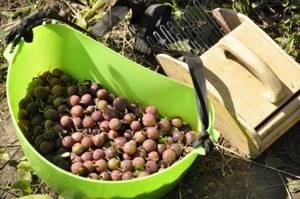
Hand combs make harvesting much easier
Special thimbles with protruding teeth allow you to comb berries from branches. The disadvantage of this method is that the fruits come off the stems, so they need to be processed immediately after harvesting.
Productivity of different varieties of gooseberries
When choosing a gooseberry variety, pay attention to the weather conditions necessary for its growth and the ripening time of the berries.
| Variety name | Characteristic |
| Ural emerald | Mid-early variety. Winter-hardy, resistant to powdery mildew. Round-oval berries with a dessert taste. Productivity 1.6 -5.6 kg per bush. |
| Hinnomaki Green | Mid-early variety. Large teardrop-shaped berries weigh 4-5 g. They are tasty, sweet and sour. The variety is frost-resistant. Productivity 4-7 kg per bush. |
| Inquita | The berries are large, oval, yellow. Weight 7 g. Medium early variety, resistant to powdery mildew. The productivity is very high. |
| English yellow | Medium early variety. Unresistant to sphere library. The berries are amber in color and very sweet. Weight 4-8 g. The skin is opaque, pubescent with single spines. Productivity is 14-15 kg per bush. |
| English green | Early ripening variety. Medium-sized oval berries weigh 3-4 g and taste very sweet. With proper care, the yield can reach 24 kg per bush. |
| Avenarius | The taste is excellent. The variety is resistant to spheroteca, frost-resistant. Round or oval berries of medium size, weigh up to 9 g. You can collect up to 13 kg from one bush. |
| Date fruit | Late ripening variety. With good care and proper pruning, the berries can reach 20 g. Oval-round or oval with a sweet and sour taste. Good transportability. In good years, you can collect up to 30 kg from a bush, especially if you add increased doses of fertilizer. In the third year of cultivation, up to 5 kg are obtained from the bush, and after three years – up to 13 kg. |
| Mysovsky 37 | Medium late variety. Resistant to frost and drought. Medium sized berries. The yield is exceptionally high. The bushes begin to bear fruit in the second year after planting. |
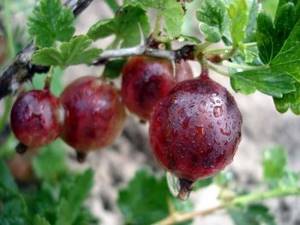
Gooseberry variety Date
Botanical description of the gooseberry fruit
Gooseberry is a shrubby fruit plant that is widely grown in garden plots. It often runs wild and spreads in forests.
Reference. Interesting names of the crop in different countries - fatty, northern grapes, goose berry.
The gooseberry fruit has different characteristics depending on the plant variety.:
- The shape is oval, round, almost spherical.
- Color green, yellow, red, violet (to almost black).
- The surface of the berry is smooth or pubescent. The veins are clearly visible.
- Weight from 2 g (for small-fruited varieties) to 20 g (for large-fruited varieties).
- Length up to 12 mm; large-fruited varieties have berries of 30-40 mm.
- The taste is sweet, sweet and sour, sweet and sour. Depending on the variety, the taste may include notes of honey (Green Rain), notes of black currant (African).
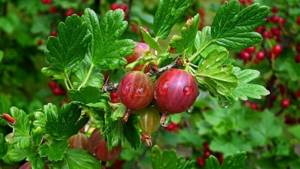
The plant blooms in May. The fruits ripen in 2-2.5 months - in July-August .
The berries ripen simultaneously, but the harvest can be harvested within a month . The fruits do not fall off, even when they reach biological maturity.
Methods for increasing gooseberry yields
The following factors are considered to maintain the productivity of gooseberry bushes:
- precise cutting;
- systematic weed control;
- balanced and timely feeding of gooseberries;
- pest control;
- disease prevention.
However, experts believe that such measures are not enough to get a good harvest. Therefore, they have identified additional, very effective methods for obtaining an excellent gooseberry harvest:
- If there is not enough space on the land, two seedlings are planted in one planting hole with a distance of 15 centimeters between them. If the adjacent crowns of the bushes are formed correctly, with an increase in the amount of fertilizer, the two root systems will easily provide themselves with nutrition. It is convenient to hill them in the fall - this is done in order to reduce the likelihood of the root system freezing in winter. In three to four years, you can harvest twice the harvest.
- If you plant the bushes at an angle, this will be an excellent incentive for the growth of the root system. Thanks to the wide base, the intensity of plant nutrition increases, which has a beneficial effect on productivity.
- Gooseberries love warmth, especially its roots. However, the hot sun dries out the soil and burns the leaves. You can artificially create a warm climate at the base of the bush by filling it with gravel and sand. Such hilling during daylight hours heats the soil so much that it remains warm at night, and also prevents the evaporation of moisture after watering.
Winter storage
Gooseberry is a cold-resistant plant. To protect against frost in November, dig up the bush (shallowly near the plant itself) and apply half a glass of complex fertilizer. The best protection against frost is snow: throw as much of it as possible onto the gooseberry plot. In regions where snow rarely falls, the berry garden is covered with agrospan. In the northern regions, the shoots are bent to the ground, and the root collar is hilled up. To combat pests, cover the gooseberries with linoleum in winter. Remove it after flowering is complete.
“Question and answer” section about gooseberries
Question. How and when to treat gooseberries with boiling water?
Spring spraying of gooseberry bushes with boiling water is carried out in order to kill pathogenic fungi and laid eggs of pests. As soon as the snow melts and the gooseberry buds have not yet begun to swell, you need to boil water, pour it into a watering can and evenly and generously water the bushes. For one large fruit-bearing bush, one full watering can of boiling water is consumed. The bush must be sprayed very carefully, trying to wet every branch from top to bottom with boiling water.
To make the procedure more convenient, the bush can be tied in front of it. The bush must be treated with boiling water in one go - this is strictly forbidden to do this again: boiling water burns and kills pathogenic microbes on the surface of the shoots, buds, and branches. However, it cools quickly, giving off heat. If you re-treat already warmed bushes with boiling water, it can penetrate inside the buds and burn them. Another point needs to be taken into account: when you decide to spray the gooseberry bushes with boiling water, you need to make sure that the buds on them should not be swollen.
Rate the quality of the article. We want to be better for you:
Entry into fruiting: timing
The entry into fruiting of gooseberries depends on its variety, growing conditions (climate, soil, lighting) and care. The timing of entry into the fruiting stage may also change under the influence of situational weather conditions. American and hybrid thornless varieties (dessert), such as Northern Captain, African, Malachite, Grushenka, begin to bear fruit as early as possible. These varieties begin to produce crops already in the second year after the seedlings take root.
Basically, gooseberries begin to bear fruit in the 3rd–4th year after planting. The period for entering maximum fruiting is 6–8 years after planting the shrub.
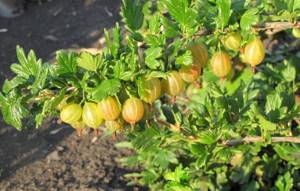
Features of gooseberry fertilizing
Soil fertility in spring, summer or autumn is increased with the help of mineral and organic fertilizers. The mixtures are applied at the root, and the prepared solutions are also sprayed on the leaves.
In the first case, furrows are made next to the bushes or fertilized along the perimeter of the tree trunk circles. For foliar spraying, sprayers are used, maintaining precise (no more than 1%) concentrations of the working compositions.
Experienced gardeners note that for a large gooseberry harvest, it is advisable to use complex mineral fertilizers (nitrophoska, ammophos and others). They contain in a balanced ratio the nutritional components necessary for plants, including microelements. The type of soil is taken into account: on loose and moisture-absorbing soils, fertilizing is applied in the spring, and in areas with dense and heavy soil - in the fall.
Fertilizing gooseberries with chelate compounds gives excellent results. They contain special agents that convert the microelements necessary for the plant into an easily digestible form. Among them: “Mikrovit”, “Tsitovit”.
In addition to seasonal fertilizing, it is necessary to apply fertilizers as needed when symptoms of deficiency of certain nutrients occur (see table).
| Signs | The element that is missing | Fertilizers |
| Slow growth of bushes. Change in leaf color (pale, dull color). Few young shoots. Reducing the number of inflorescences | Nitrogen | Ammonium nitrate contains 35% nitrogen, urea (urea) contains 46%. Of the complex formulations, azofoska and nitrophoska are suitable |
| Brittle shoots. Yellowing of leaf blades. Shedding of inflorescences and leaves. Chopping berries | Potassium | Potassium sulfate - 50% of the missing element, potassium salt - 40% |
| The leaves change color from bright green to burgundy red. Shifting flowering dates to a later time. Shedding of ovaries. Reduced yield | Phosphorus | Superphosphate - simple (15-20% phosphorus), double (50%) |
Timely help will allow you to quickly solve problems in gooseberry nutrition and avoid crop loss.
The age of the plants is taken into account, since young bushes require less nutrition than adult, abundantly fruiting plants. The dosage for 3-4 year old plantings is half as much as for bushes that are 7 or more years old.
Fertilizing when planting crops
Gooseberries are planted in spring or autumn. A portion of fertilizer must be added to the pits, which will provide the plants with nutrition for the first 3 years.
On a note! Mineral compounds are thoroughly mixed with the soil, otherwise the roots of the seedlings will get burned.
Contribute:
- rotted manure;
- compost;
- double superphosphate (full matchbox);
- potassium sulfate (in the same volume as the previous component).
It is allowed to use a complex composition (for example, nitrophoska) according to the instructions. If the soil was well filled during planting, then the crop does not need fertilizing in the next 2-3 years. Exception: slower growth and development of bushes, manifestation of a lack of certain components.
Fertilizers during the growing season
Depending on the season (spring, summer, autumn), the composition of fertilizing and its frequency for gooseberries is determined. The basic NPK complex is required throughout the growing season, but the proportions of the components will vary.
What to feed in spring
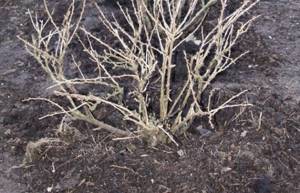
After winter, berry bushes need to resume shoot growth and increase green mass as quickly as possible. Enhanced nutrition is required at the budding stage, as well as at the stage of ovary formation.
It is recommended to feed the gooseberries 2-3 times in the spring:
- until the buds swell;
- before and after flowering.
| Deadlines | Fertilizers | How to contribute | Consumption (per 1 square meter) |
| 1st feeding - before buds open, in early spring (as soon as the snow cover begins to melt) | Rotted manure, compost | When loosening the soil. After application, water the soil abundantly and mulch | 5 kg |
| Potassium sulfate | 15 g | ||
| Urea | 15 g | ||
| Superphosphate | 25 g | ||
| 2nd feeding - before flowering | Manure, compost | 5 kg | |
| Nitrophoska | 20 g | ||
| Ammofoska | 20 g |
The scheme is also suitable for other berry crops on the site. You can fertilize currants and gooseberries in the spring with a special composition “Berry” (take 2 tablespoons of fat per 10 liters of water), spending 20-30 liters per adult bush.
Foliar treatments per leaf are shown (proportions are given per 10 liters of water):
- ammonium sulfate (20-25 g);
- urea (30 g).
Spraying increases crop yield.
Important! During the flowering period of the berry tree, foliar treatments in order to protect pollinating insects are prohibited!
The following compositions are suitable from folk remedies:
- honey (1 tbsp), whey (1 l), sour cream (1 tsp), raw yeast (10 g). The components are mixed and the total volume is adjusted to 10 liters with water. Leave until complete fermentation (about 6-9 days), then dilute the concentrate in a ratio of 0.5:10, water the gooseberries at the root;
- infusion of fermented herbs. Dandelions, comfrey, nettles are poured into the tank - about ⅔ of the volume, filled (to the very top) with water, closed and left for 7-10 days. The composition is stirred periodically. Decant the liquid, dilute it with water (1:20), water the berry bushes into the soil around the trunk.
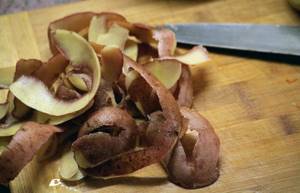
The crop responds well to the addition of potato peelings to the soil. The glucose and starch they contain contribute to the rapid ripening of berries and saturation with sugars. The peelings are dug into the ground near the bushes or the gooseberries are watered with the prepared infusion. A small amount of potato peel (dry or fresh) is steamed with boiling water, left for a day and then watered on the berry bushes.
Fertilizing in summer
After flowering, the plants move to the next stage of the growing season - the formation and ripening of berries. The crop requires, first of all, potassium and phosphorus supplements, nitrogen - to a lesser extent.
| Deadlines | Fertilizers | Proportions (per 10 liters of water) |
| Fruit setting | Potassium sulfate | 40 g |
| Simple superphosphate | 60 g | |
| Slurry | Prepare the composition: take a bucket of manure (fresh) for 100 liters of water. Leave for a week, then dilute the solution with water (1:10). |
In summer, fertilization is combined with watering, after which the soil is thoroughly loosened and mulched with peat or compost.
Effective feeding:
- 2 tbsp. potassium humate;
- 1 tbsp. complex fertilizer (nitrophoska);
- 10 liters of water.
All components are mixed, 20 liters are used per adult bush.
Feeding in the fall
The main goal of the event is to prepare the gooseberries for wintering and to provide nutrition for the fruit buds that are being formed at this time. The culture loves to “eat”, actively consuming nutrients during the flowering and fruiting period. The soil becomes depleted, so you can’t do without fertilizers.
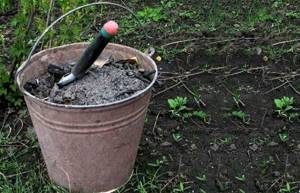
Priority is given to phosphorus and potassium compounds, since nitrogen fertilizers lead to powerful shoot growth. Gooseberry wood does not have time to fully ripen before the cold weather, and the plants freeze out in winter.
What is used (dry):
- potassium salt (100 g);
- potassium sulfate (100 g);
- simple superphosphate (120 g);
- wood ash (1 l).
Fertilizer consumption is given per 1 sq.m of planting.
It is recommended to remove the old mulch and add a renewed layer of peat, humus or sawdust. This not only protects the gooseberry root system from freezing, but also provides nutrition.
When can gooseberries be planted?
The crop can be planted both in spring and in autumn. Most experienced gardeners recommend autumn planting, especially in the southern regions, explaining that the plant will have time to take root before the cold weather and will bear fruit for the next season.
When choosing a place for northern grapes or gooseberries, you should take into account that the plant has very long roots, and therefore it is not planted in the lowlands. The fact is that on damp soil, gooseberries will begin to suffer from fungal infections.
The best place for gooseberries is a sunny, flat area or a small hill. It is advisable that the site be protected from the piercing north wind.
The soil should be neutral or low acidity. Loam, sandy soil, and clay soil are excellent.
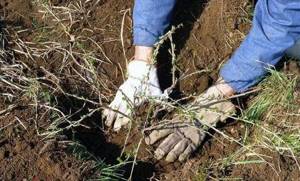
Pests and diseases of gooseberries
With improper watering, gooseberries often develop powdery mildew. Grayish spots begin to appear on the leaves. You only need to water it at the root. And powdery mildew can be dealt with with a soda solution, a teaspoon per liter of water.
Aphids, moths, and sawflies are also frequent guests. As soon as I notice this “living thing,” I dilute half a piece of laundry soap, grated on a coarse grater, and a liter jar of ash in a bucket of water. I let it sit for three hours, strain and spray. I am not a supporter of using chemicals in my garden. But if everything is very neglected and there are too many living creatures, you will have to poison them with biological products, for example, Aktara.
